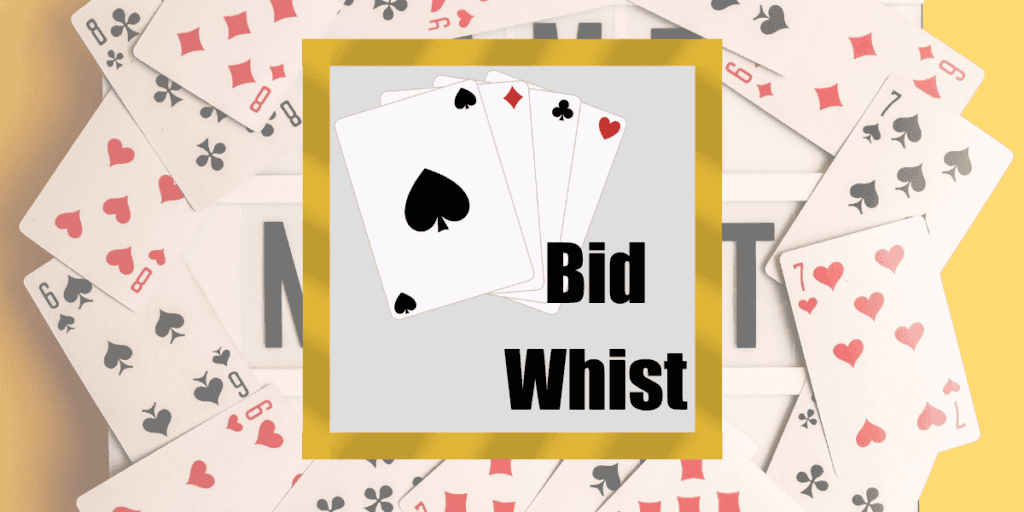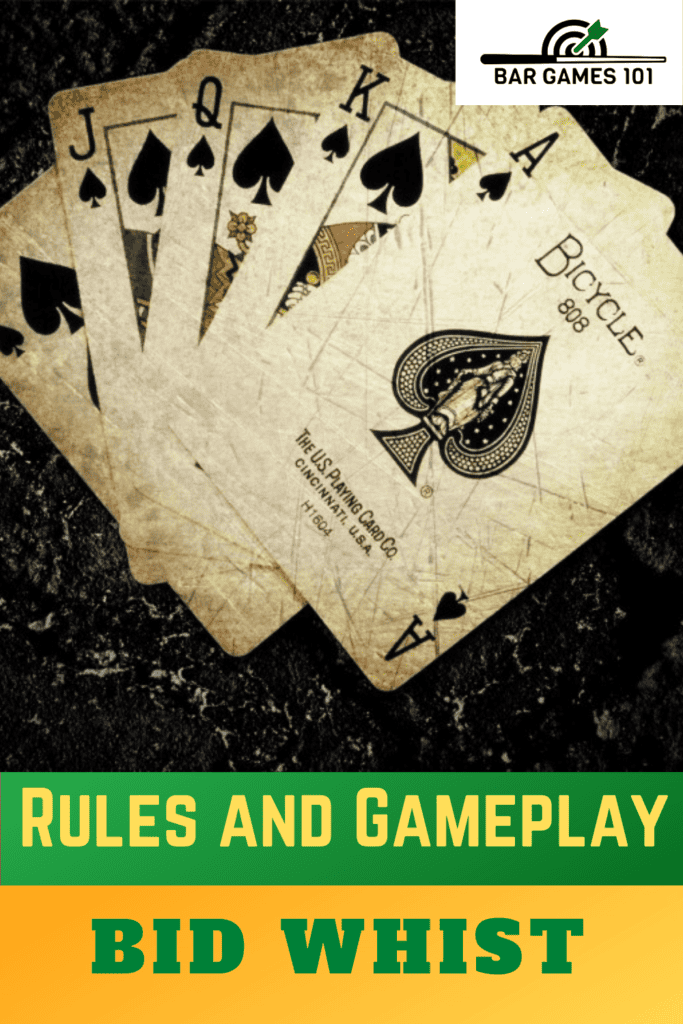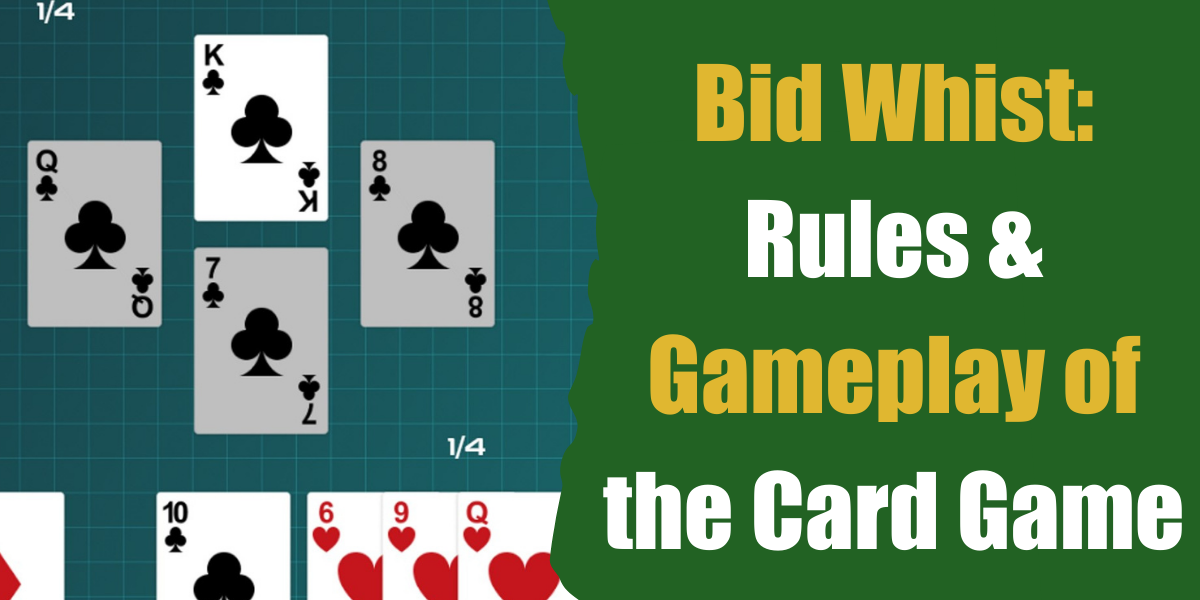You might have heard of Whist already; it’s a popular trick-taking card game that dates back to the 18th century. Bid Whist is a variant of this game that adds new gameplay elements. In some places, Bid Whist has even overtaken the game it was inspired by in popularity.
So, before we look at the rules, let’s look at what this card game is all about.
What is The Bid Whist Card Game?

Like many card games, the exact origins of Bid Whist are a bit of a mystery. But we do know precisely how it’s played! As a spinoff of Whist, the gameplay is similar, but some key differences still exist.
There are four key differences between the two games. First, in Bid Whist, the new bidding process decides the trump suit (if one is for a specific hand). This new bidding process also determines whether a trick is won by the winning suit’s higher or lower ranking card.
The ace can be the highest or lowest ranking card in Bid Whist. Finally, the way the scoring works in Bid Whist is also slightly different. Bid Whist remains very popular in the US Military and African American communities alongside other trick-taking games like Pitch and Spades.
While the game has a learning curve, it makes a great social/ party card game once you get the fundamentals down. So, before we examine the rules, let’s take a look at what you’ll need to play.
What You’ll Need To Play?
To play Bid Whist, you’ll need a deck of playing cards. Finding some cards shouldn’t be difficult, but if you want your deck to stand out, these Bicycle Sea King cards will make a fine choice. We recommend some waterproof cards if you plan to play down at the pub.
Unlike many alternative games, the Joker cards are used in Bid Whist. Bid Whist can seem confusing at first, so if you’re new to the game, we recommend playing a few practice hands before jumping into the game properly.
Rules and Gameplay

The Aim of The Game
You win in Bid Whist by being the first team to achieve a score of seven or more points. Although if a team scores minus seven or more first, then that team automatically loses. Now there is a lot more to learn about Bid Whist so let’s jump into the setup and rules you need to know.
The Set-Up
Bid Whist is played with four people separated into two teams. Each partner must be sat opposite each other, not next to each other. When the game starts, both teams have a score of zero, and points are earned by winning tricks.
However, to win tricks, you need to bid on them first. We’ll explain more about how this works in the rules section below. One last thing to remember is that tricks are sometimes referred to as books in Bid Whist. Either term works, so feel free to use what you’re more familiar with.
The Deal Phase
Bid Whist begins with the deal. One player should shuffle the deck; you can use an automatic card shuffler for this, and the first player to get a diamond card becomes the first dealer. Cards should be dealt one at a time, in a clockwise motion. Each player receives 12 cards, with the final six cards in the deck being placed in the center of the table.
These cards form the kitty; the dealer should deal the cards for the kitty while dealing out the cards to the other players. After a hand is finished, the player to the dealer’s left becomes the new one.
The Bidding Phase
Now, this is where things can get a little confusing. The Bidding Phase takes place after the deal, and we’ll outline how it works bit-by-bit below. The player to the left of the dealer will bid first, and each person bidding will say a number between three and seven and say uptown, downtown, or no trump.
The number that is bid is how many books/ tricks you’ll think your team can win. You are bidding on how many you’ll win above six. So, if you bid four, you are saying you’ll win at least ten tricks/ books.
The next part of your bid is about the trump suit. Saying uptown means you intend to name a trump suit and high cards win. Downtown means you will name a trump suit, but low cards will win.
Saying no trump means there are no trump cards for the hand and that you will decide if high or low cards win if you win the bidding phase. That’s the basics of how the bid phase works, but there is a bit more to remember.
First, if you bid, you must bid higher than the previous bid. Uptown and downtown bids are equal, but no trump outranks both. You can pass on a bid if you want to. If you are bidding uptown or downtown, you don’t name which suit is your trump.
You only name the trump suit if you win the bidding phase. If the first three players pass on the bidding phase, the dealer must put in a bid to start the round.
The Play
Once the winning bid is decided, the round begins. The winning bidder must first take the cards from the kitty and add them to their hand. They must then discard six cards from their hand; they can choose any cards to discard.
The cards they discard are then placed face-down in front of them. These cards count as the first trick/ book won by the bidder’s team. The bidder then starts play by putting down a card. Other players must follow the lead suit if they have a matching card.
If a player can’t, they can play a trump suit or another suit. A trump card beats any non-trump card. If multiple trump cards are played, the highest-ranking trump (decided by the bid) will win the trick/ book. If no trumps are played, the highest-ranking card in the lead suit will win.
Now the ranking of the cards can vary in Bid Whist. It all depends on what the winning bid was. To help make this easier to understand, we have listed the uptown and downtown card rankings below.
- Uptown Trump-Suit: Big Joker, Little Joker, A, K, Q, J, 10, 9, 8, 7, 6, 5, 4, 3, 2.
- Uptown No-Trump Suit: A, K, Q, J, 10, 9, 8, 7, 6, 5, 4, 3, 2.
- Downtown Trump-Suit: Big Joker, Little Joker, A, 2, 3, 4, 5, 6, 7, 8, 9, 10, J, Q, K.
- Downtown No-Trump Suit: A, 2, 3, 4, 5, 6, 7, 8, 9, 10, J, Q, K.
Take particular note of the Joker cards. Before the game begins, players must decide which is the big Joker and which is the little one. So, ensure the two Joker cards are distinct and easy to tell apart.
The Scoring
Finally, let’s discuss the scoring. At the end of each hand/ book, the bidding team will either earn or lose points. Since each team starts at zero, it is possible to go into a minus score. The game is over when one team wins seven or more points or scores minus seven or more.
There are 13 books/ tricks per round (including the kitty); every book is worth one point. The number of books/tricks is counted at the end of a hand. To win, the bidding team needs to make their initial bid.
Bid Whist – A Twist on A Classic Card Game
Everyone loves a good trick-taking card game like Euchre, and Bid Whist is a great example of why these games are so fun. If you’re looking for a new competitive card game to try, give Bid Whist a try.


